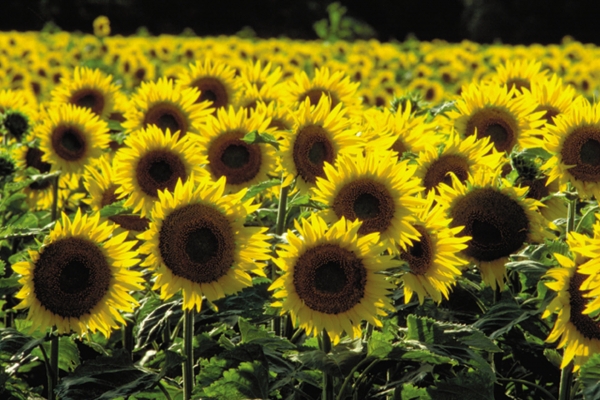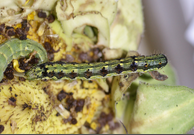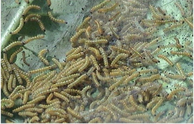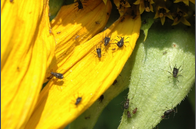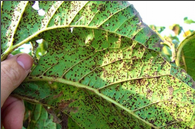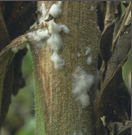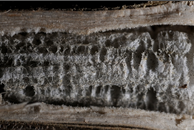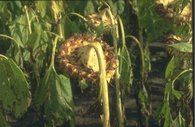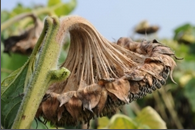Improved varieties:
Morden: Ready to harvest in 80-85days. Gives average yield of 3.2-4qtl/acre with 34-38% oil content.
S.S 56: Early maturing variety. Ready to harvest in 80-85days. Gives average yield of 4 to 4.2qtl per acre. Suitable in drought prone areas.
E.C.68415: Ready to harvest in 100-110days. Variety having oil content 42-46%. Gives average yield of 3-4qtl/acre.
Bhanu: Ready to harvest in 85-90days. Suitable for growing in all season. Suitable for drought prone areas. Gives average yield of 4.8-5.2qtl/acre.
Hybrid varieties:
K.B.S.H 1: Ready to harvest in 85-90days. Gives average yield of 4.8-6qtl/acre.
K.B.S.H 44: Gives average yield of 5-6.4qtl/acre.
Phule Raviraj: High yielding hybrid. Gives average yield of 6-8qtl/acre.
L.S.F.H 171: Gives average yield of 7-8qtl/acre.
JWALAMUKHI: Ready to harvest in 85-90days. Gives average yield of 12-14qtl/acre with 42-44% oil content.
Phule Bhaskar: Early maturing variety. Ready to harvest in 80-84days. Oil percentage is high. Gives average yield of 6-7.5qtl/acre.
L.S.F.H 35: Resistant to downey mildew. Gives average yield of 6.4-7.2qtl/acre.
L.S.F.H 8: Ready to harvest in 90days. Resistant to downey mildew. Gives average yield of 4.8 – 5.6qtl/acre.
L.S.F.H 17: Ready to harvest in 90-95days. Resistant to downey mildew. Gives average yield of 7.2 – 8qtl/acre.
Other state varieties:
Variety: DRSF 108, PAC 1091, PAC-47, PAC-36, Sungene-85
KBSH 1, MSFH 8, PAC 36, KBSH 44, HSFH 848, PCSH 234
K.V.S.H 1: Hybrid, ready to harvest in 90-95days. Gives average yield of 7.2-8qtl/acre with 43-45% oil content.
S.H 3322: Hybrid, Ready to harvest in 90-95days. Gives average yield of 8.8 to 10qtl/acre with 40-42% oil content.
V.S.F 1: Hybrid, Ready to harvest in 90-95days. Gives average yield of 7.2-8qtl/acre with 35-40% oil content.
Hybrids: KBSH 44, APSH-11, MSFH-10, BSH-1, KBSH-1, TNAU-SUF-7, MSFH-8, MSFH-10, MLSFH-17, DRSH-1, Pro.Sun 09.
MSFH 17, PAC 1091, PROSEN 09, HSFH 848

